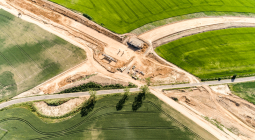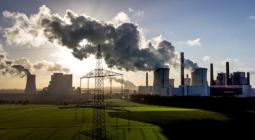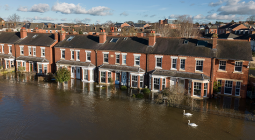As Wildfires Threaten Urban Areas Like Los Angeles, ‘Planning for the Unprecedented’ Is Crucial, Experts Say
As fires rage on in Los Angeles County, communities struggle to evacuate. Here’s what everyone should know as fire risks worsen nationwide.
When Michael Huard took his dog outside on Tuesday in Pasadena, California, a strong gust of wind blew his door wide open.
“Once the wind started, it was like, ‘Oh, this is real,’” he told me over the phone on Thursday. “It felt like what I imagined at the beginning of a hurricane feels like.”
But a different kind of destruction was headed his way. On Tuesday, a blaze dubbed the Eaton fire ignited in the hills above the nearby Altadena area of Los Angeles County. Alerts trickled in on Huard’s phone urging residents around the area to prepare for potential evacuation, so he and his wife stuffed their “go bags” with passports, dog food and other crucial items and documents before they turned in for the night.
The next morning, around 5 a.m., Huard and his wife woke up to the tickle of smoke in their throats and swiftly booked lodging in San Diego, without waiting for a formal evacuation order.
“I was like, ‘I’m looking at Airbnb, and we’re getting out of here,’” he said. “We just want to get going before other people have the same idea.”
In the days since then, chaos has ensued. Multiple severe fires broke out in the region, including the Palisades fire—the largest and most destructive in Los Angeles history. After months without substantial rain in the area, the infernos spread rapidly, aided by the viciously strong and dry seasonal gusts known as the Santa Ana winds. As of Friday afternoon, the fires have killed at least 10 people and put more than 150,000 in the Los Angeles area under evacuation orders.
Many of those who waited for formal orders to leave faced gridlock on the roads. Some, stuck in traffic for hours, finally fled their cars and ran as flames consumed nearby neighborhoods. A wide body of research on past wildfires shows the multitude of factors that go into the complex and often harrowing decision-making process behind evacuating. But as climate change fuels the modern era of severe and longer-lasting fire seasons, experts are urging officials—and all of us—to prepare for the unprecedented.
Fleeing the Flames: The Palisades fire has scorched through more than 20,000 acres stretching from Malibu to Santa Monica, destroying more than 5,000 structures. While officials say the blaze’s spread has slowed, it was just 8 percent contained as of Friday afternoon. In northern LA County, the Eaton fire has incinerated more than 13,600 acres of land, and firefighters have contained about 3 percent of it so far. Multiple smaller fires dot the city, which you can follow on a series of real-time maps published by the Los Angeles Times.
As thousands of people try to flee the city at once, evacuations have been a logistical nightmare in some cases. With fires cutting off some exit routes and spreading fast after ignition, cars have clogged the streets in Los Angeles—one of the densest urban areas in the country and a city already known for its traffic congestion.
“Something that hits me and that I’m really, really concerned about, and that honestly keeps me up at night, are fires that are getting closer and closer and affecting urban areas,” social scientist Erica Kuligowski told me on Wednesday over the phone. She’s a principal research fellow at the School of Engineering at RMIT University in Melbourne, where she studies fire engineering and sociology. “That is really what continues to worry me for the U.S. and Australia as well, and Canada and other places in these areas where we have a lot of people densely located and roads that could be potentially inadequate to allow them safe escape.”
That’s largely what happened when evacuation orders were first issued in the Pacific Palisades neighborhood, The New York Times reports. The upscale, hillside area is known for its steep topography and sprawling views over the Pacific Ocean. But the area has few roads leading in and out, and when most people flock to the Pacific Coast Highway, for escape, it became “tantamount to a one way in, one way out community,” Thomas Cova, a professor of geography at the University of Utah, told me on Thursday.
“The roads are not designed for anywhere near that many people to leave at once, and so you get gridlock,” said Cova, who studies wildfire emergency management. He was particularly struck by the fact that people abandoned their cars to run from the flames, similar to those caught in the middle of the destructive Lahaina fire that burned through Maui in 2023. “People don’t get out of their cars and run for nothing.”
Research shows the importance of having multiple routes of escape during wildfires to improve ingress and egress—a term used to describe the flow of civilians able to leave an area while emergency responders go in to fight the fires. In Los Angeles, evacuating has been especially difficult for people without cars or who have disabilities. Further complicating the situation, multiple false evacuation alerts have been sent out to LA County residents outside the main zone of concern in the past day.
But there are many who chose to stay despite the growing fiery threats, illustrating the differences in individual risk assessments that people make when a disaster hits, Kuligowski said.
“There are a lot of factors that influence our risk perceptions, like, have you been in a fire before? Have you experienced damage or not? Did you evacuate and maybe you didn’t need to?” she said. She added that in some cases, people stay behind to try to protect their homes and neighborhoods from embers, a trend documented across LA County over the last few days. One of the confirmed fatalities from the Eaton fire was a man who was trying to defend his home using a garden house, ABC News reports.
Inside Scoop: On Thursday, I spoke with journalist Audrey Gray, who has reported on California climate issues for ICN, about her experience in the LA-area fires. She is based in the Santa Monica area, which has been heavily impacted by the Palisades fire, and has spent the last few days ping-ponging around the city to find the most adequate refuge from the blazes and dangerous smoke permeating the air.
On Tuesday, Gray spent the night at her son’s residence in the Hollywood area to avoid the flames creeping closer to her home, which was located just outside the evacuation zone. She returned to Santa Monica on Wednesday, only to learn of a separate fire that had ignited near Hollywood (which has since been put out). Gray then rushed back to pick up her son and bring him to her home, which had now become the seemingly less risky option.
“I’m a climate journalist. … You can have all kinds of knowledge about a disaster, but when your son calls and says, ‘I can see the flames,’ all bets are off,” she said. As of Thursday afternoon, Gray was still deciding whether to stay or leave town. To help minimize the health risks from wildfire smoke inhalation, she sealed her apartment windows with packaging tape and turned on her air purifier.
“Now the game is like, ‘OK, is bad air enough of a reason to evacuate?’ And it might be,” she told me. “If I lose power, then I don’t have an air purifier. Then, I’m just like, I have to hit the road.”
Expect the Unexpected: In 2018, a deadly blaze—dubbed the Camp Fire—just about incinerated the small Northern California community of Paradise and killed 85 people, marking one of the state’s deadliest fires in history. In the wake of this tragedy, the state Legislature passed laws designed to improve evacuation planning.
But the staggeringly fast spread of the current fires moving through LA County stressed many of these plans to the breaking point, residents say. As fire seasons become more intense with climate change, officials must prepare for wildfires worse than they’ve ever imagined, Cova said.
“I call it planning for the unprecedented, which is sort of like an oxymoron [because] how can you plan for something that’s never occurred?” he said. “A lot of times the professionals, the firefighters and emergency managers, they have an idea—they have an envelope of what they think is a realistic scenario. And that’s not going to work anymore.”
He said that means preparing for unexpected hiccups in evacuation plans, including if major roads are cut off by fires or a fire spreads faster than expected, like what happened with the Palisades fire. Kuligowski and a team of researchers created a simulation to help emergency planners and decision-makers map out these types of situations in fire-vulnerable areas around the world. She also stressed that individuals should map out their own plans for evacuation before wildfire season begins. Experts say that includes people in areas that haven’t historically had major fire risks, as climate change helps shift the geography of deadly wildfire.
“The earlier you can think about what you can’t live without, or what would be very difficult to replace, and make a list and even prepare the bag and have it ready at your door, the better,” Kuligowski said. “It’s valuable time to put in now for the future.”
In some cases, though, evacuating everyone in an area may not be possible. To help people survive the blaze, Cova says that counties can create or designate fire-tolerant shelters such as the library that protected students at Pepperdine University in Malibu when the Franklin fire hit in December.
“What happens now is that these fires in LA become a poster child for the rest of California, for the rest of the West,” he said. Communities in the region may ask, “‘Could this happen to us?’ And it’s very hard to say no when we keep seeing unprecedented events.”
More Top Climate News
AccuWeather estimates that the total damage and economic loss of the Los Angeles area wildfires could reach $150 billion. People across the region are mourning the loss of their homes and damage to historic landmarks such as the Palisades Charter High School, where many movies and shows were filmed. Meanwhile, insurance industry experts fear collapse if payouts to cover damages become too high, which is the reason some companies have stopped selling policies in this area in recent years, Molly Liebergall reports for Morning Brew. The Associated Press’ Gabriela Aoun Angueira reported how people can help those affected by the California wildfires.
New research found that treated wastewater contains elevated levels of hazardous “forever chemicals” that can contaminate drinking water. Researchers analyzed wastewater samples from around the U.S. and found high levels of six types of chemicals known as PFAS, which have been linked to cancer, reduced immune system function and other health risks. This is problematic because “more people are set to rely on treated wastewater to sustain their daily lives” as freshwater supplies dwindle with climate change, Hiroko Tabuchi writes for The New York Times.
In Chicago, all city buildings now run on 100 percent renewable energy, Juanpablo Ramirez-Franco reports for Grist. Most of the energy comes from Illinois’ newest and biggest solar farm, and is projected to cut the city’s carbon emissions by 290,000 metric tons annually.
“Chicago is demonstrating directly how cities can lead by example, implement ambitious goals amidst evolving state and federal policy changes, and leverage their purchasing power to support a more equitable renewable energy future,” Matthew Popkin, the cities and communities U.S. program manager at nonprofit RMI, which researches decarbonization strategies, told Canary Media.
Cover photo: Burned vehicles that were left behind when people fled the Palisades fire lined the streets on Jan. 8, 2025. Credit: Apu Gomes/Getty Images





